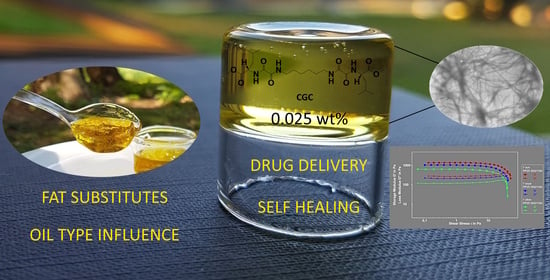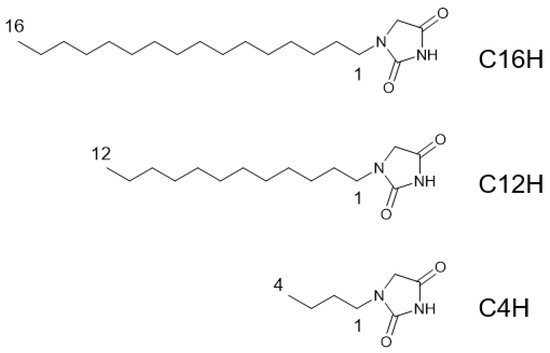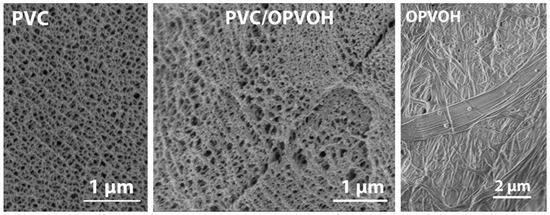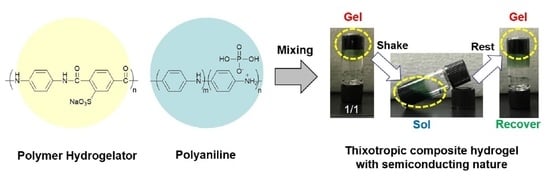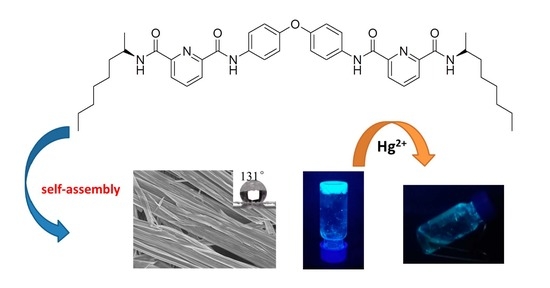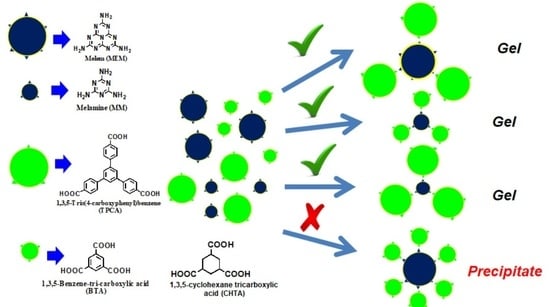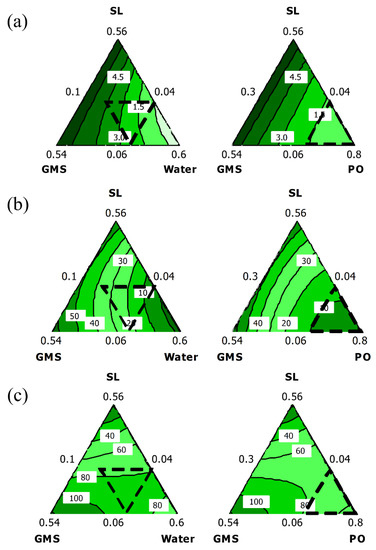Recent Advances and Future Perspectives in Organogels and Organogelators Research
Share This Topical Collection
Editor
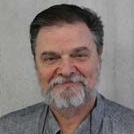 Prof. Dr. Jean-Michel Guenet
Prof. Dr. Jean-Michel Guenet
 Prof. Dr. Jean-Michel Guenet
Prof. Dr. Jean-Michel Guenet
E-Mail
Website
Collection Editor
Institut Charles Sadron, UPR 22, CNRS-Université de Strasbourg, 23 rue du Loess, BP 84047, 67034 Strasbourg, France
Interests: thermoreversible gelation of polymers and biopolymers; organogels; polymer-solvent compounds; self-assembled systems; hybrid gels; neutron scattering; calorimetry; rheology
Special Issues, Collections and Topics in MDPI journals
Topical Collection Information
Dear Colleagues,
Organogels were originally discovered by sheer serendipity from the fortuitous jamming of solutions of low-molecular weight molecules in organic solvents. This unexpected behavior triggered the curiosity of scientists, which is how this topic has received an only growing interest throughout the years. As a matter of fact, the number of papers containing the keyword “organogel” has grown from only a few in the late 1990s to more than 250 a year today.
In view of this success, the editorial board of Gels has estimated that the creation of a topical collection devoted to this topic is appropriate and timely. The papers published in this collection should span the recent advances in the understanding of the organogelation process, their physical properties, their potential applications, and their future.
Prof. Dr. Jean-Michel Guenet
Collection Editor
Manuscript Submission Information
Manuscripts should be submitted online at www.mdpi.com by registering and logging in to this website. Once you are registered, click here to go to the submission form. Manuscripts can be submitted until the deadline. All submissions that pass pre-check are peer-reviewed. Accepted papers will be published continuously in the journal (as soon as accepted) and will be listed together on the collection website. Research articles, review articles as well as short communications are invited. For planned papers, a title and short abstract (about 100 words) can be sent to the Editorial Office for announcement on this website.
Submitted manuscripts should not have been published previously, nor be under consideration for publication elsewhere (except conference proceedings papers). All manuscripts are thoroughly refereed through a single-blind peer-review process. A guide for authors and other relevant information for submission of manuscripts is available on the Instructions for Authors page. Gels is an international peer-reviewed open access monthly journal published by MDPI.
Please visit the Instructions for Authors page before submitting a manuscript.
The Article Processing Charge (APC) for publication in this open access journal is 2600 CHF (Swiss Francs).
Submitted papers should be well formatted and use good English. Authors may use MDPI's
English editing service prior to publication or during author revisions.
Keywords
- organogels
- thermodynamics
- gelation mechanism
- physical properties
- applications
Published Papers (7 papers)
Open AccessArticle
Self-Healing Oxalamide Organogelators of Vegetable Oil
by
Nataša Šijaković Vujičić, Josipa Suć Sajko, Lidija Brkljačić, Petra Radošević, Ivanka Jerić and Ivona Kurečić
Cited by 1 | Viewed by 1027
Abstract
The aim of this study was to assess the gelling potential of chiral oxalamide derivatives in vegetable oils. Special emphasis was given to the potential applications of the examined oil gels as sustained delivery systems and as fat substitutes in food products. The
[...] Read more.
The aim of this study was to assess the gelling potential of chiral oxalamide derivatives in vegetable oils. Special emphasis was given to the potential applications of the examined oil gels as sustained delivery systems and as fat substitutes in food products. The applicability of oil gelators is envisaged in food, cosmetics, and the pharmaceutical industry. The regulations requiring the elimination of saturated fats and rising concerns among consumers health motivated us to investigate small organic molecules capable of efficiently transforming from liquid oil to a gel state. The oxalamide organogelators showed remarkable gelation efficiency in vegetable oils, thermal and mechanical stability, self-healing properties, and a long period of stability. The physical properties of the gels were analysed by TEM microscopy, DSC calorimetry, and oscillatory rheology. The controlled release properties of acetylsalicylic acid, ibuprofen, and hydrocortisone were analysed by the LC–MS method. The influence of the oil type (sunflower, soybean, and olive oil) on gelation efficiency of diverse oxalamide derivatives was examined by oscillatory rheology. The oxalamide gelators showed thermoreversible and thixotropic properties in vegetable oils with a minimum gelation concentration of just 0.025 wt%. The substitution of palm fats with gelled sunflower oil applied in cocoa and milk spreads at gelator concentrations lower than 0.2 wt% have shown promising viscoelastic properties compared to that of the original food products.
Full article
►▼
Show Figures
Open AccessArticle
N-Alkylhydantoins as New Organogelators and Their Ability to Create Thixotropic Mixed Molecular Organogels
by
Yutaka Ohsedo
Cited by 3 | Viewed by 1177
Abstract
The author reported molecular organogels using
N-alkylhydantoins as new low-molecular-weight gelators for the first time, and thixotropic mixed molecular organogels using a set of
N-alkylhydantoin gelators with different alkyl chain lengths. These homologous compounds with different alkyl chains are found to
[...] Read more.
The author reported molecular organogels using
N-alkylhydantoins as new low-molecular-weight gelators for the first time, and thixotropic mixed molecular organogels using a set of
N-alkylhydantoin gelators with different alkyl chain lengths. These homologous compounds with different alkyl chains are found to form macroscopic crystals or solution states in polar solvents, but form homogeneous organogels in non-polar solvents, such as
n-octane and squalane. Although there is no significant increase in the minimum gelation concentration of the mixed molecular gels using squalane as a solvent, these mixed molecular organogels show improved mechanical properties, especially in their thixotropic behavior, which is not observed in the single
N-alkylhydantoin gels. Furthermore, they exhibit reversible thixotropic behavior with quick recovery of the gel state in a minute by quantitatively measuring dynamic viscoelasticity measurements of rheometry of mixed molecular gels. Based on the morphological observations of the xerogels, the self-assembling fibers of the gelators become finer, indicating an increase in the density of the mesh structure inside the gel, which could explain its thixotropic behavior. These thixotropic mixed molecular gels may be applicable to ointment base materials, because they are gelled with squalane oil.
Full article
►▼
Show Figures
Open AccessArticle
Some Remarkable Rheological and Conducting Properties of Hybrid PVC Thermoreversible Gels/Organogels
by
Dominique Collin, Ganesh Viswanatha-Pillai, Andreas Vargas Jentzsch, Odile Gavat, Emilie Moulin, Nicolas Giuseppone and Jean-Michel Guenet
Cited by 2 | Viewed by 1664
Abstract
We report on investigations into the rheological properties of organogels prepared from triarylamine trisamide (TATA) and oligo phenylene vinylene (OPVOH) molecules in binary organogel gels and in ternary thermoreversible networks with poly vinyl chloride (PVC). In the case of OPVOH, we show that
[...] Read more.
We report on investigations into the rheological properties of organogels prepared from triarylamine trisamide (TATA) and oligo phenylene vinylene (OPVOH) molecules in binary organogel gels and in ternary thermoreversible networks with poly vinyl chloride (PVC). In the case of OPVOH, we show that the modulus of the ternary gel is simply the sum of the modulus of each binary gel, corresponding to the so-called Voigt upper limit. In contrast, TATA/PVC ternary gels generally exceed the Voigt upper limit. In an attempt to account for this unexpected outcome, we hypothesized that a de-solvation process might occur in the PVC fibrils that possibly originates in the propensity of TATA molecules to form molecular compounds with the solvent. Finally, the conducting properties of TATA/solvent organogels and TAT/PVC/solvent reversible networks were measured. It was found that they strongly depend on the solvent type but are not significantly altered when PVC is present. Therefore, PVC gels can be made conducive by incorporating TATA fibers.
Full article
►▼
Show Figures
Open AccessArticle
Polymeric Hydrogelator-Based Molecular Gels Containing Polyaniline/Phosphoric Acid Systems
by
Yutaka Ohsedo and Mayumi Sasaki
Cited by 3 | Viewed by 1647
Abstract
To expand the range of applications of hydrogels, researchers are interested in developing novel molecular hydrogel materials that have affinities for the living body and the ability to mediate electrical signals. In this study, a simple mixing method for creating a novel composite
[...] Read more.
To expand the range of applications of hydrogels, researchers are interested in developing novel molecular hydrogel materials that have affinities for the living body and the ability to mediate electrical signals. In this study, a simple mixing method for creating a novel composite molecular gel is employed, which combines a hydrophilic conductive polymer, a polyaniline/phosphoric acid complex, and a polymer hydrogelator as a matrix. The composite hydrogel showed an improved gel-forming ability; more effective mechanical properties, with an increased strain value at the sol–gel transition point compared to the single system, which may be sufficient for paintable gel; and a better electrochemical response, due to the electrically conducting polyaniline component. These findings demonstrate the applicability of the new composite hydrogels to new potential paintable electrode materials.
Full article
►▼
Show Figures
Open AccessArticle
Bis-Pyridine-Based Organogel with AIE Effect and Sensing Performance towards Hg2+
by
Aiping Gao, Qingqing Han, Qingqing Wang, Rong Wan, Huijuan Wu and Xinhua Cao
Cited by 3 | Viewed by 1854
Abstract
A novel gelator (
1) based on a bis-pyridine derivative was designed and synthesized, which could form stable gels in methanol, ethanol, acetonitrile, ethyl acetate, DMF/H
2O (4/1,
v/
v) and DMSO/H
2O (4/1,
v/
v).
[...] Read more.
A novel gelator (
1) based on a bis-pyridine derivative was designed and synthesized, which could form stable gels in methanol, ethanol, acetonitrile, ethyl acetate, DMF/H
2O (4/1,
v/
v) and DMSO/H
2O (4/1,
v/
v). The self-assembly process of gelator
1 was studied by field emission scanning electron microscopy (FESEM), UV–vis absorption spectroscopy, fluorescence emission spectroscopy, Fourier transform infrared spectroscopy (FT-IR), X-ray powder diffraction and a water contact angle experiment. Gelator
1 exhibited obvious AIE behavior. On the base of its AIE, the gel of
1 could detect Hg
2+, which resulted in fluorescence quenching and a gel–sol transition.
1H NMR titration experiments with Hg
2+ revealed that the metal coordination interaction induced the fluorescence quenching and the breakdown of the noncovalent interaction in the gel system. This research provides a new molecular mode for designing a functional self-assembly gel system.
Full article
►▼
Show Figures
Open AccessArticle
Effect of Tricarboxylic Acids on the Formation of Hydrogels with Melem or Melamine: Morphological, Structural and Rheological Investigations
by
Pradip Kumar Sukul, Puspendu Das, Gopal Lal Dhakar, Lalmohan Das and Sudip Malik
Cited by 3 | Viewed by 2235
Abstract
Herein, aggregation behaviors of melem or melamine in the presence of three symmetric carboxylic acids (1,3,5-tris(4-carboxyphenyl)benzene (TPCA), 1,3,5-benzene-tri-carboxylic acid (BTA) and 1,3,5-cyclohexane-tri-carboxylic acid (CHTA)) have been performed to check the influence of acid on the formation of aggregated structures which have been investigated
[...] Read more.
Herein, aggregation behaviors of melem or melamine in the presence of three symmetric carboxylic acids (1,3,5-tris(4-carboxyphenyl)benzene (TPCA), 1,3,5-benzene-tri-carboxylic acid (BTA) and 1,3,5-cyclohexane-tri-carboxylic acid (CHTA)) have been performed to check the influence of acid on the formation of aggregated structures which have been investigated by optical microscopy, FESEM, FTIR, XRD and viscoelastic properties have been explored with rheological studies. Interestingly, melem, that has limited solubility in aqueous medium, forms aggregation that leads to the formation of hydrogels with TPCA. More significantly, hydrogel is formed here by matching the size selectivity. Melem forms hydrogel with only large tricarboxylic acid, whereas melamine produces hydrogel with any kind of its counterpart from small to large tricarboxylic acid derivatives. Present investigations and results provide the strategy of design of organic self-assembled materials having two component systems.
Full article
►▼
Show Figures
Open AccessArticle
Palm Olein Organogelation Using Mixtures of Soy Lecithin and Glyceryl Monostearate
by
Sheah Yee Ghan, Lee Fong Siow, Chin Ping Tan, Kok Whye Cheong and Yin Yin Thoo
Cited by 5 | Viewed by 2090
Abstract
The present work investigated the interaction between soy lecithin (SL), glyceryl monostearate (GMS), and water in structuring palm olein (PO) to create an organogel having similar mechanical properties to commercial spread. Extreme vertices mixture design was used to optimize the composition of PO-based
[...] Read more.
The present work investigated the interaction between soy lecithin (SL), glyceryl monostearate (GMS), and water in structuring palm olein (PO) to create an organogel having similar mechanical properties to commercial spread. Extreme vertices mixture design was used to optimize the composition of PO-based organogel. The resulting model showed a good fit to the predicted data with
R2 ≥ 0.89. The optimum composition was 8% SL, 22% GMS, 28% water, and 42% PO (
w/
w) to produce a mean firmness of 1.91 N, spreadability of 15.28 N s
−1, and oil binding capacity (OBC) of 83.83%. The OBC of optimized organogel was 10% higher than commercial spread product, and no significant difference was observed in the mechanical properties (
p > 0.05). The microstructure, as well as the rheological and thermal properties of the optimized organogel were characterized. Fourier transform infrared analysis indicated that hydrogen bonding and van der Waals interactions were the key driving forces for organogelation. The mixture of SL and GMS favored the formation of β′ + β form crystals with a predominance of the β′ form. These results have important implications for the development of PO-based organogel as a potential fat replacer in the production of low-fat spread.
Full article
►▼
Show Figures






